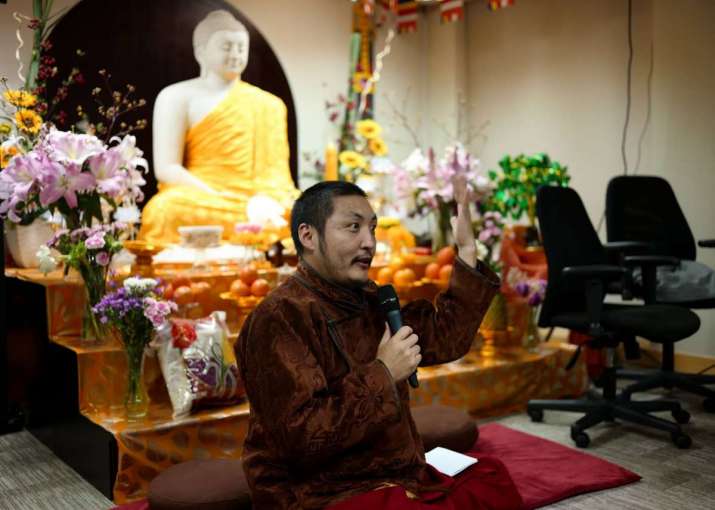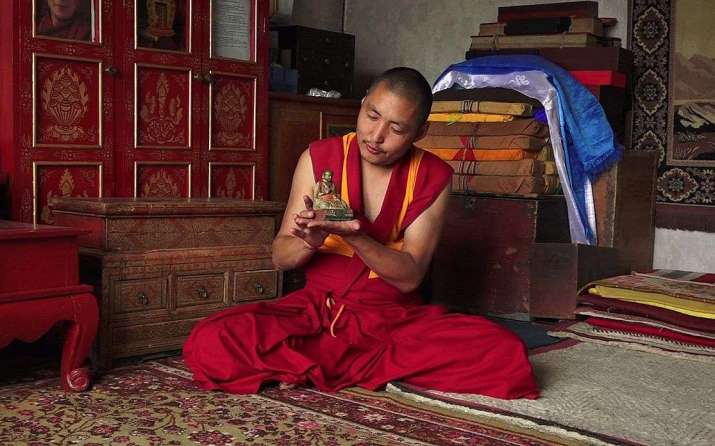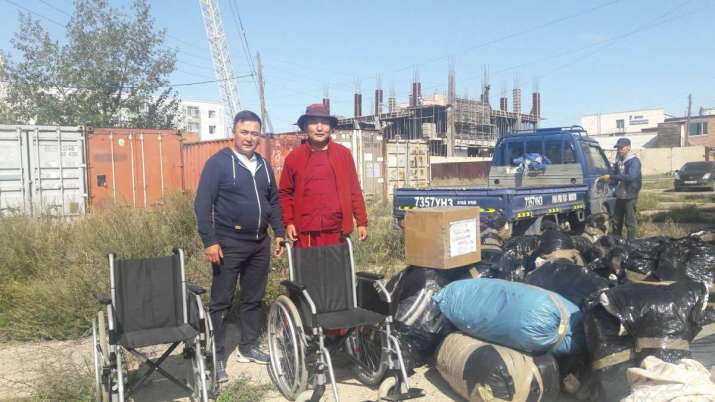There is a famous poem which almost every Mongolian knows by heart. It goes:
Dung smoke pouring forth
I was born in a herder’s home
On the wilderness steppe
I think of my native land
But the days that Mongolians were born in a herder’s home with the smell of dung smoke have long since passed. Nowadays, most Mongolians are born with the acrid smell of coal smoke in their nostrils.
Even just hearing the word “winter”, my throat starts to hurt. During wintertime, Mongolia’s capital Ulaanbaatar becomes one of the most polluted cities in the world, as thick smog from coal power stations and coal-burning stoves blankets the freezing streets.
This year the air seems worse than ever, and as the temperatures plummeted and the streets began to fill with smog, I started to wonder – what must this seasonal torture be like for mothers with babies and young children? What kind of worries must fill their minds, when they see their city start to resemble
a smoke-filled warzone?
The physical impacts of breathing such polluted air are well known, and are especially dangerous for pregnant women and young children: lower birth weight, impaired brain function, damaged lungs, premature births and stillbirths. And according to
UNICEF, pneumonia is now the second most common cause of death for Mongolian children under 5, killing hundreds of babies and toddlers every year.
I couldn’t imagine what it must be like to be a young mother trying to cope with Ulaanbataar’s air crisis – so I spoke to two mothers who could tell me.
Money worries and placebo purifiers
The first was 25-year-old Gerel, currently living with her 11-month-old baby and her husband in one of Ulaanbataar’s most polluted districts. She feels helpless in the face of months of smog and smoke, and worries she can’t afford to protect her family. “There’s no way to reduce the air pollution outside, so I bought an air purifier for our house,” she said. “But good air purifiers are very expensive. My husband and I can’t rely on our parents financially, so we live off only our own salaries. But now only my husband works because I have to take care of my baby. So we had to buy a cheaper Chinese air purifier.”
She admitted that the purifier was more for peace of mind than any noticeable health impact. “Personally I don’t feel the difference of having the air purifier or not, but it makes me feel happier to have it on,” she said. “I also bought an air pollution mask with filters for my son. He really doesn’t like it. He keeps trying to take it off, and he gets very upset wearing it. But that’s very expensive for us too, because you have to change the filters all the time.”
Sarnai, the second mother I interviewed, is 35. She lives with her husband and three children, and manages her own small business. “The best I can do is to keep the air in our home clean, take my kids out of the city on weekends and stay out of the city during summer holidays,” she said. “But it’s so expensive.”
“I saw on Twitter that mothers go abroad during winter. But it’s impossible for us to go abroad during winter. My oldest child goes to school. What am I going to do about their school? Somehow I have to try to survive in Mongolia.”
To breathe or to leave: that is the question
Gerel chose to leave the city to give birth, hoping to protect her newborn son from early exposure to pollution. She plans to return to her parents’ place in the countryside in the winter, but worries about the impact on her marriage.
“I think a family should stay together, so I don’t stay in the countryside for too long,” she said. “It’s hard to stay apart after being married with promises of living together, facing any challenges and raising our baby together. Being apart is hard for both me and my husband. It’s also hard for the kids who grow up without their dads’ care.”
Being separated from her husband isn’t just emotionally challenging – it imposes financial costs, too. “When I stay in the countryside, my husband visits sometimes – he takes a train on Friday night and arrives the next morning, stays on Saturday and heads back to the city on Sunday. But it’s tiring for my husband and costs us so much.”
For Sarnai, separating her family was too much. “I don’t think it’s a good idea to take my kids out of the city and leave my husband and my oldest child behind. If it’s really hurting their health, I would do it to save my children’s life. But my husband should also acknowledge his responsibility as a father. I want us to raise our kids together.”
Black lungs, broken hearts
Since giving birth, Gerel has found herself increasingly frightened by the severity of Mongolia’s pollution. “We just don’t know what will happen to our kids’ lungs in the future. It’s scary. I didn’t used to care so much about air pollution when I was single - I used to complain about my throat hurting, but that was it. But now I worry about how my son’s lungs are, how the pollution is affecting his body.”
Mothers in Ulaanbaatar have come together online to discuss their fears, but for Gerel it doesn’t always help. “I know that mothers share their stresses or worries on mothers’ groups on Facebook… the group that I am in now is very active. But my biggest fear is the screenshots on the posts that mothers make,” – like pictures of lungs turned black from coal dust.
Sarnai also frequently shared her pollution worries with friends and family on Facebook. But that, she said, is relatively unusual. “Many Mongolians aren’t able to identify their own mental issues, or own up that something is making them stressed,” she said. “We have this attitude that no one should admit that they have problems. We’re just polishing ourselves on the outside.”
Sarnai worries that her children’s future is bleak. “What’s dangerous about this air pollution is that the consequences aren’t even known at the moment,” she says. “I think our kids will gradually become worse at studying and focusing. It’s really sad to think that the impacts of air pollution will live with our future generations for years. It‘s heartbreaking.”
“I want to run away from Mongolia,” she says. “But I don’t know where to.”
A social movement for change?
Sometimes, it feels like our city is under the spell of a furious dragon, spewing smoke and ash. But if air pollution is the dragon, the question becomes - who will defeat this monster? Should we sit and wait for a “hero” with a muscular body, a sharp wit, and a lightning-fast horse to save us? Or should we try to find a way by ourselves?
In the late 19thand early 20th century, London was notorious for its thick smog. Caused by the mass burning of coal for power and heat, the smog reached disastrous levels in December 1952, killing up to 12,000 people and hospitalizing thousands more. In response to public pressure, the “Clean Air Act” was passed in 1956, forcing homes and businesses to reduce coal use and accelerating the uptake of clean fuels. By 1980, air pollution in London had fallen by 80%.
The city of London was saved by social movement, scientific pressure, effective policies, and the cooperation of civilians and government. But who is going to save Ulaanbaatar? Air pollution is a complex problem which demands everyone’s participation. Governments will not change the law without public pressure, and laws alone will not create the
social changerequired to make coal pollution history. There have been anti-pollution
protests in Ulaanbaatar, but as Sarnai pointed out, too many Mongolians still don’t want to admit how scared they are.
*Names have been changed throughout.
Source:www.citymetric.com










